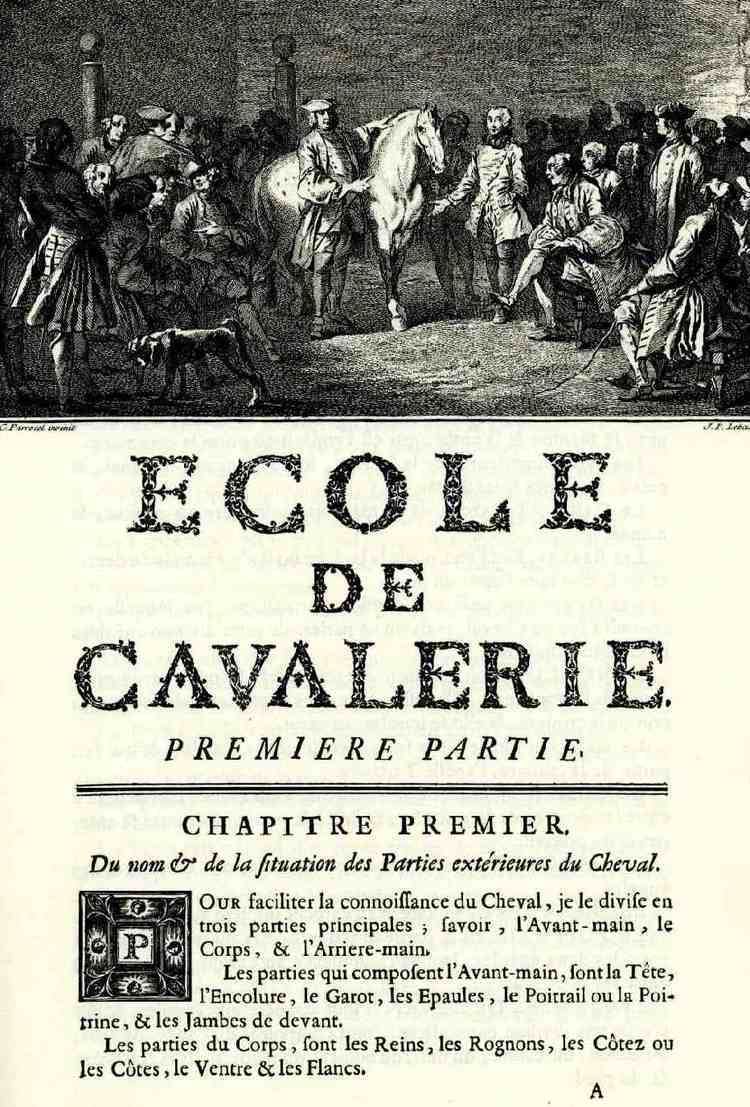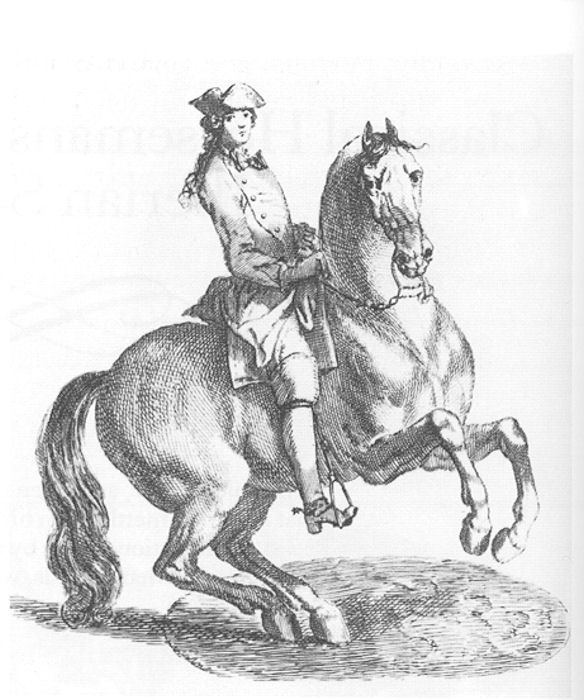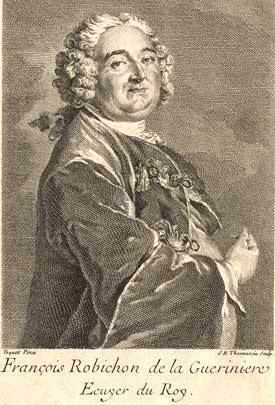Language French Period Baroque Name Francois de | Nationality French Notable works Ecole de Cavallerie Role Writer | |
 | ||
Occupation riding master, writer on dressage Died July 2, 1751, Paris, France Books School of Horsemanship, Ecole de Cavalerie Part Two: School of Horsmanship Part Two | ||
Francois Robichon de La Gueriniere (1688–1751) was a French riding master who had a profound effect on accepted methods for training horses, and one of the most influential writers on the art of dressage.
Contents

History

De La Gueriniere was born on 8 May 1688 at Essay, near Alencon in Normandy, France. He spent most of his early years in Normandy. Although his brother Pierre des Brosses de La Gueriniere directed the Academie d'equitation in Caen, originally established in 1594 by another French master, Antoine de Pluvinel, de La Gueriniere's most influential instructor was de Vendeuil.

In 1715, de La Gueriniere received his diploma as an ecuyer du roi, and he began as a director of an equestrian academy in Paris, a position which he held for 15 years and which earned him a reputation as an instructor and rider. This led to an appointment by the Grand ecuyer de France, Prince Charles of Lorraine, as Directeur du Manege des Tuileries in 1730. He held the position of Equerry to Louis XIV until his death in 1751.
Riding theories
De La Gueriniere is credited for the invention of the shoulder-in, which he called the "alpha and omega of all exercises"; he was the first to describe it. His treatise L'Ecole de Cavalerie, "The School of Horsemanship", which was published in parts between 1729 and 1731, and as a complete work in 1733, is an important book on the training of the horse, detailing equitation, veterinary treatment, and general horsemanship. This book has become an important text for the Spanish Riding School of Vienna.
De La Gueriniere gave exercises to increase suppleness and balance of the horse, and a progressive schooling system to reach an overall goal: a light, obedient, calm horse that was a pleasure to ride. De La Gueriniere is also credited with the invention of the flying change and the counter-canter.
In his book, Ecole de Cavallerie (Paris, 1733), de La Gueriniere stresses the use of few aids and punishments while riding. He advises the use of the shoulder-in at all gaits, including the gallop. De La Gueriniere states the rider must also have a good seat in order to have a soft, light hand, and makes several references to William Cavendish, 1st Duke of Newcastle.
